
Change Management for AI is about the Organization
Why traditional views on change need to change, because AI is about the organization, rather than process and technology
When we look to the future, the place where AI will have the greatest impact and require the greatest changes in approach lie not in technology but within the organization. The impact of AI is not on the steps within processes but within the decisions that the organization takes.
AI therefore will be much more about a new way of viewing the organization than it will be about Process or Technology. I’m not talking about “AGI” or other such nonsense, I’m talking about how we should be thinking about where AI truly sits from a change perspective. Many people talk about their company becoming “Data & AI Driven” but what does that really mean? At a fundamental level it means the organization changes from one that sees technology as “outside the business” to one where the business is accountable for the reflection of reality within its data, the metamirror, and where AI is inextricably interlinked with the roles and responsibility of the organization.
Moving to a 50% AI world, and being Data & AI driven, is not simply a matter of new tech, or new processes, it is a fundamental change in the business culture, its organization and the responsibilities of that organization.
AI is about the People in Process and Technology
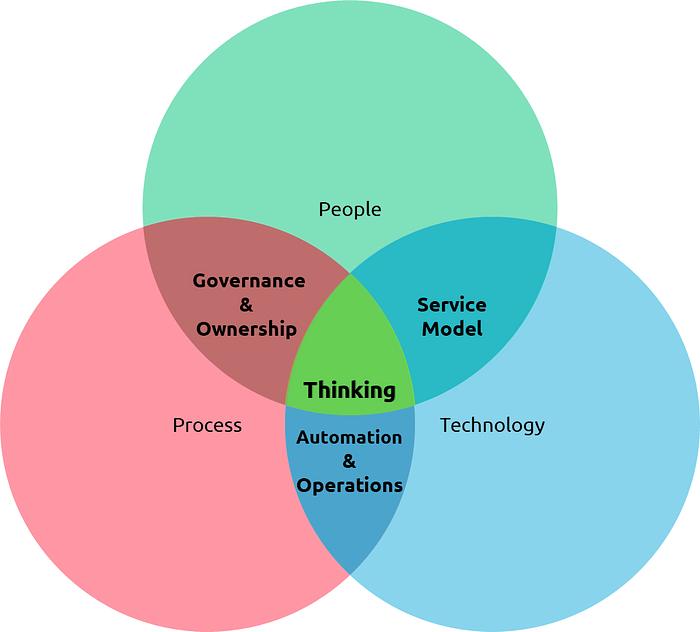
“People, Process, Technology” has been a mantra of business change for decades, and is an overly simplistic way of looking at what it really takes. Most notably the need to address cultural and thinking changes, not simply “people” changes is often over looked. I’ve written before about how these approaches need to focus more on the overlaps than the “PPT” itself.
People, Process, Technology doesn’t work if you don’t start with Culture
Changing how people think is the biggest challenge in transformation
The key element here is that where AI fits, and has the greatest impact, is almost entirely within the people area, with the other element being in Automation & Operations.
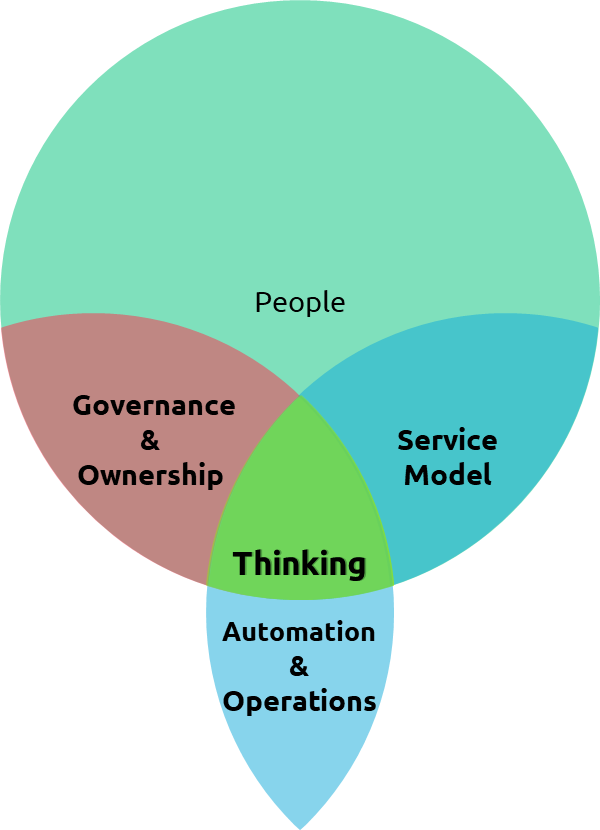
I’m going to ignore automation & operations here and concentrate instead on why you should think about the people transformation challenge when thinking about AI. First lets start why it isn’t about technology or process.
Process is steps, AI is decisions
Processes are going to be made a commodity with GenAI, but that isn’t actually a change element for an organization, it is just about GenAI being a tool to create them. Processes however are how “things get done” so people use processes, and so does AI, an AI can call a process, change a decision and impact an outcome, but it isn’t a good way to think of the AI as being a process.
AI uses technology, but it isn’t a transaction
The obvious place many people put AI is into the technology bucket, its a technology therefore that is the bucket. It is certainly true that AIs leverage technologies, and if we just look at a model without purpose then that is a technology. When we give it a purpose however it is different to SAP or a Data Warehouse or any of the other current systems within IT, because AI aims to take ownership of decisions rather than just execute instructions it is better to think of it linked to the people who have accountability for those decisions. Today we do this with something like SAP, the corporate approval levels might be enacted within SAP, but those decisions are part of the organization.
Why AI is an organizational challenge problem
So that was the “why not” but what about the “why”, why is it that AI should be best considered as a primarily a change to the organization rather than in Process or Technology?
AI is about decisions
The first point is that AI is about decisions, decisions that today are probably taken by people, decisions that require authority and approval. The concept of ordering stock is a process thing, the system that does it a technology thing, but the right to do it and to set the volumes that are ordered is a business decision. Controlling AI is much more about authority and governance (the overlap of people and process) than it is simply about steps and order.
AI is about a domain of control — its a role
You want an AI to take control of an area, to have a clear boundary of control, you might want it to take accountability for a business outcome, for instance procurement negotiation. The AI needs to be constrained to that domain of control, it needs… a role.
The scope of an AI is best thought of as a role definition for that AI, does that mean it interacts with process? Yes. Will it use technology? Of course. But at its heart it is fulfilling a role in the organization.
Trusted AI — What is Scope?
In Trusted AI the scope is one of the fundamental elements. Without a scope there is no control and you do not know…
AI is about accountability
With businesses in future relying on AI to deliver it means that people within the business need to take accountability for that AI. So we need to think about how people manage AI.
Trusted AI — Human in Control
As part of the Trusted AI framework the first pillar is “Human in Control”, for me this is utterly essential. AI is…
The AI should be operating on delegated authority from a specific person to work within their defined boundaries. This means it is better to think of the AI in terms of a manager and a team member than in terms of it being just a technology execution engine or a business process.
If AI is organizational then the organization must be digital
So if AI is best considered as an organizational shift, was does it mean about that organization, its processes and the technology that supports it?
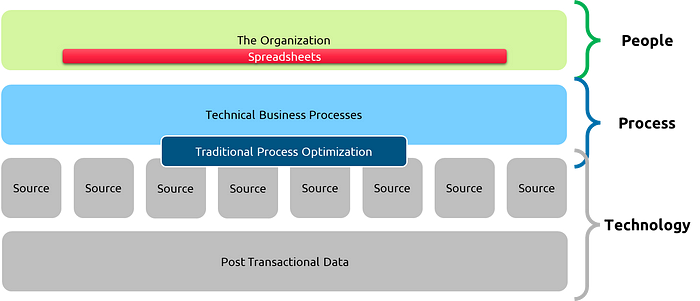
Today the business is actually run people people filling in the gaps in processes, using ad-hoc data (or guesswork) to make a lot of their decisions and relying on their historical and contextual knowledge to get things right. These get described as everything from “desktop processes” to “cultural knowledge” and its how people work. A great example of cultural knowledge is fear, you don’t do something because you fear you’ll get fired if you do it, and you fear the consequences of getting fired. The organization relies upon that fear, and your conscience, to stop you doing bad stuff they don’t want.
So when we move AI into the organization it isn’t the same problem that we’ve historically had. An AI has no conscience, it has no fear, it has only the cultural knowledge that you explicitly tell it about, and only respects boundaries that you enforce. You need to be able to build the specific digital context required by the AI to correctly deliver its outcome at that specific point of time.
So when we move AI into the organization it isn’t the same problem that we’ve historically had. An AI has no conscience, it has no fear, it has only the cultural knowledge that you explicitly tell it about, and only respects boundaries that you enforce. You need to be able to build the specific digital context required by the AI to correctly deliver its outcome at that specific point of time.
Decisions in Context
Or how AA and BA should have built their systems
This means we have an entire new layer of data that is required, a layer of data that enables AI to understand the business, the current business, and the context within which it needs to make a business decision. That view and that context need to be linked to the person who has the authority over the AI.
There is a new IT for AI which is about “I” not “T”
This shift means that those spreadsheets that make the organization run today aren’t going to cut it. We’re going to need a new generation of data platform, one that is organizationally centric with a goal of providing people, and their AIs, with a reliable metamirror that represents digital version of their actual business reality.
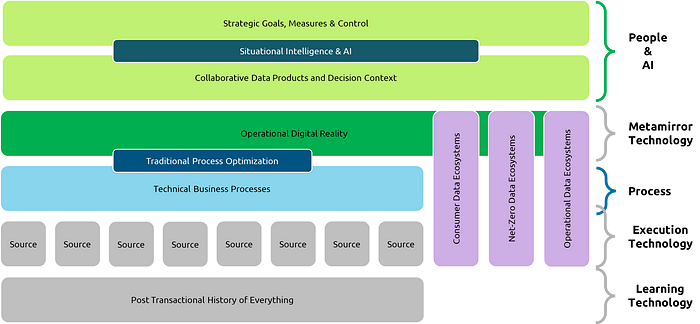
That new layer is all about surfacing the right context into every decision. It isn’t a homogenized view its organizationally centric in order to give AIs and the people required to control them the information they need to succeed. I’ll go into this layer more in future posts (and update a link here if I remember).
So in this new organization model the hierarchy includes not simply the people, but the AIs over which they have authority and the roles that those AIs are allowed, and expected to take. Reorganizing people, promoting them, transferring them, them quitting will have direct impacts on the AIs on which they are accountable. If someone is promoted they will need to hand over AIs which are specific to their existing role, if someone quits then their AIs will stop working unless transferred to someone else.
AI + Organization = Organism
Richie Etwaru has a great way of describing this, he talks about how an Organization becomes an Organism, and I think that is a smart way to think about this new challenge. Instead of a clear separation between the people side (the roles and responsibilities), the processes (execution steps) and the technology (the how and automation), we instead have a new organism which includes participants who act under authority, live off the metamirror of the business and are reacting in a much more dynamic way as a result.
The AI driven organism is a much more interactive beast than the organization of today.
Change in a world where everyone is in IT
Managing change in this sort of world is remarkably different, because unlike today where we have clear separations between technology and business teams in most organizations, in the AI driven organism we end up with viewing AI skills as part of the organization, as fundamental to the success of the role.
This is not as simple as just saying “oh that is just people, process, technology”, because it fundamentally isn’t. We need to relook at how we consider change in a world where AI will be fundamentally intertwined with people, where you will have both a personal AI and your corporate AIs, where managing your AIs will be part of your role in the same way as you manage a team today.
Your IT Department won’t exist in 2030
Why GenAI could mean everyone is in IT, but the IT department disappears
50% AI world requires a new approach to change management, and to management
This fundamental shift to a world where 50% of decisions will be taken by AI and the rest supported or guided by it requires a shift in our thinking on business culture, when we say that a company needs to be Data & AI driven that requires us to change the business culture to consider Data as a responsibility of the business and AI as a partner for the business. It requires us to look at change not in terms of deploying an AI as a technology, but in terms of how it alters the roles and responsibilities of the organization, and how the organization will take control of its digital reality to a level that means the metamirror is a true reflection of its business condition.
This cultural shift is in the organization, its in the people, without that change in taking accountability for data to ensure AI makes decisions based on reality, taking accountability for ensuring that AI is aligned to the business objectives, then a business cannot be data & AI driven, it can simply be one that has a bunch of AI technology that it uses.
When thinking about a 50% world you need to think about AI as primarily transforming the organization and the new Data & AI culture you want to enable.





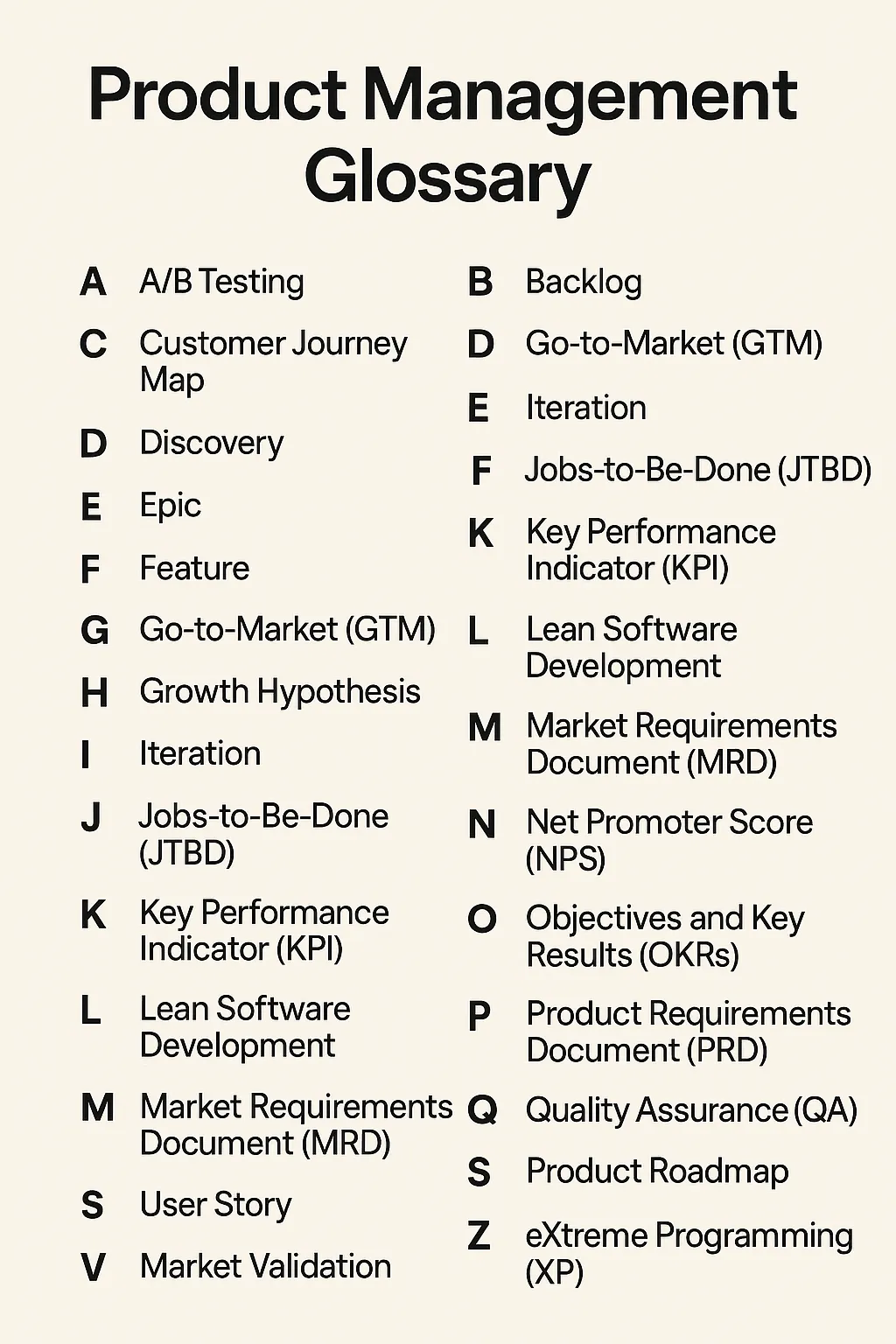
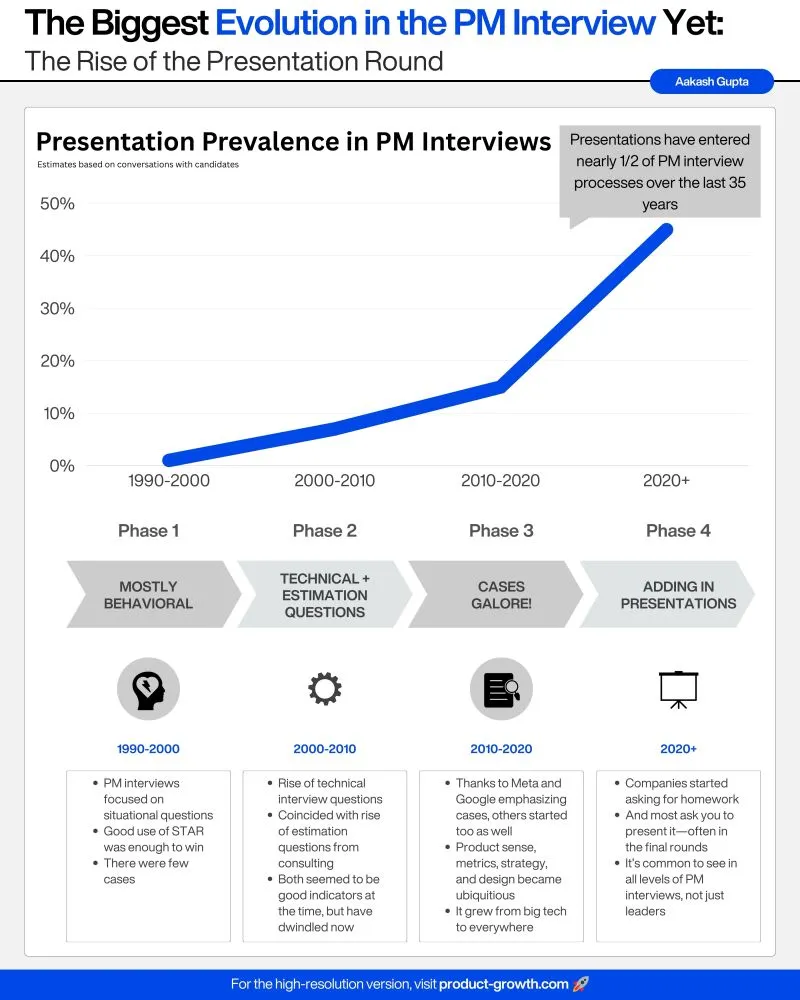

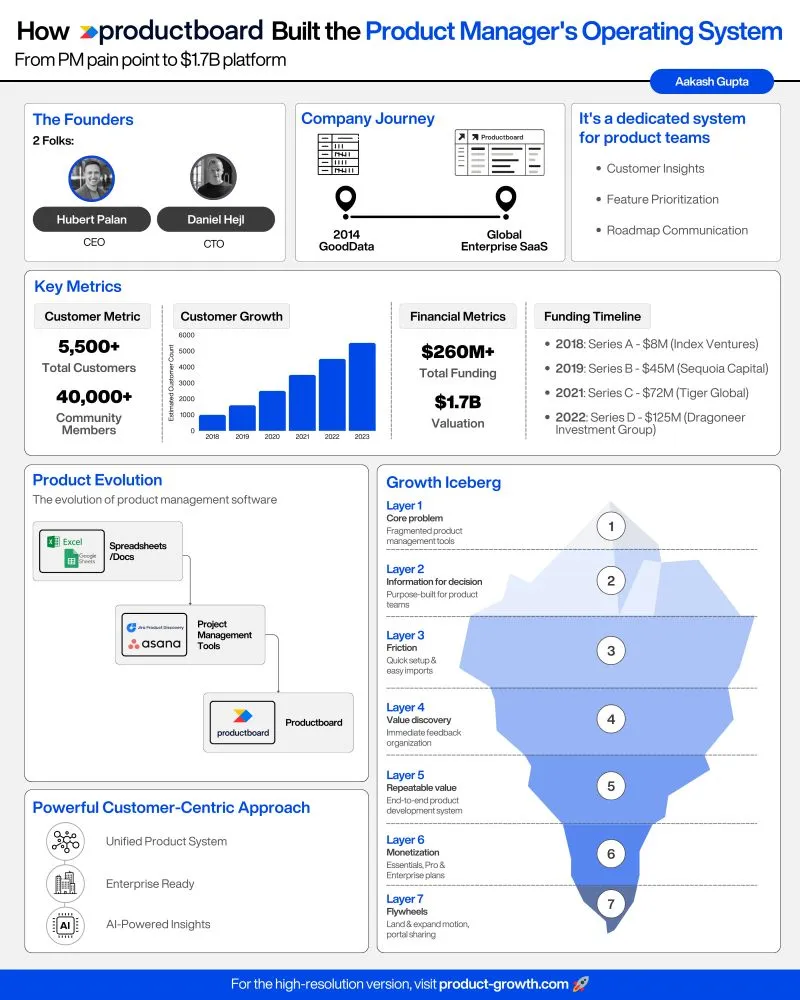
Comments ...
Leave a Comment
AnonymousUser Reply
Привет всем! Хочу рассказать, как я избавился от папиллом при помощи лазера. Честно говоря, немного боялся идти на процедуру, так как не знал, будет ли больно. Меня удивило, что процедура длилась так недолго. Лазерный метод действительно не вызвал боли, только легкий дискомфорт. Могу сказать, что результат меня порадовал — кожа без рубцов, и теперь выглядит отлично. Прошло уже несколько недель, и папилломы не возвращаются. Читал, что лазерное удаление является одним из самых безопасных методов, и теперь могу это подтвердить. Если кто-то имеет опыт лазерного удаления папиллом, пожалуйста, поделитесь, стоит ли делать что-то дополнительно для предотвращения повторного появления? Слышал, что нужно использовать специальные кремы после лазера — кто-то может что-то порекомендовать? Очень надеюсь на ваши советы и мнения — спасибо! Современные методы удаления папиллом <a href=https://www.laserwartremoval.ru/>https://www.laserwartremoval.ru/</a> .
Leave a Comment